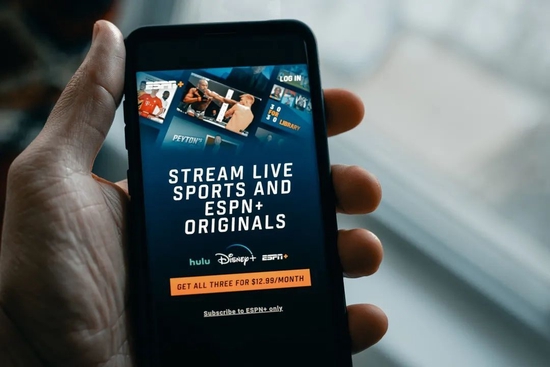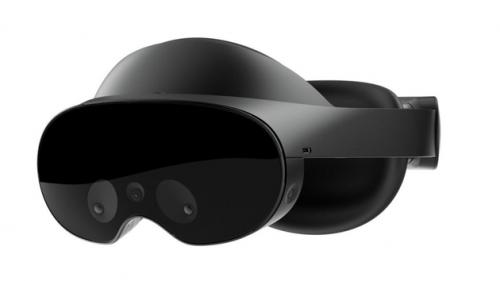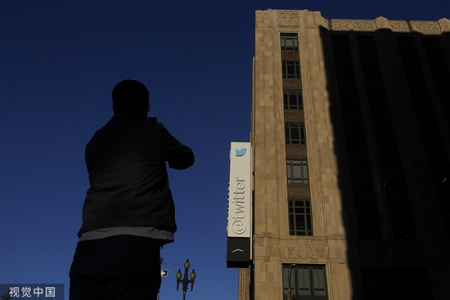your current location is:Home > Finance > depthHomedepth
540 billion, Silicon Valley competes for the NBA
"Cable TV will be dead in 5 to 10 years," streaming giant Netflix CEO Reed Hastings said on an investor conference call ahead of Q2 2022 earnings in July forecast above.
At present, the above prophecy may be a step closer to becoming a reality.
Recently, the US sports business media Front Office Sports reported that the NBA is looking for potential streaming media rights owners, and Google, Apple and Amazon are all competing.
Currently, the NBA's broadcast rights are in the hands of cable TV ESPN/ABC and TNT, with Disney behind the former and Turner Sports behind the latter. The NBA's current contract, worth $24 billion, runs for nine years and expires in 2024.

But this price has not satisfied the NBA. The NBA is reportedly targeting $75 billion in new broadcast rights contracts.
Judging from the broadcast rights contracts reached by the NBA in the past, the price of $75 billion seems extremely ambitious, but the current sports broadcast rights battle is changing.
Previously, the NFL's new broadcast rights contract was as high as $113 billion for an 11-year period. Amazon, CBS, ESPN/ABC and FOX received the broadcast rights.
Among them, Amazon also owns the rights to broadcast the NFL's Thursday night games at a price of $1 billion per year, which is the first time that the streaming media has obtained the exclusive season live rights of the NFL.
In June of this year, Apple TV+ won the exclusive streaming rights of Major League Soccer MLS for $2.5 billion, which will last from 2023 to 2031. This is also a landmark event: what MLS sold to Apple is a package plan, no longer splitting the games, and the broadcast of all games for 10 years is exclusively owned by Apple. For this reason, MLS must terminate its cooperation with other TVs. cooperation of giants. Moreover, Apple also emphasizes that it is "unlocked". Anywhere in the world, as long as Apple TV+ is supported, you can watch all MLS games if you buy it.
With the continuous increase in the penetration rate of streaming media users, the ratings of cable TV are declining. Sports events that have been signed for many years have become the "last line of defense" for cable TV, and now the copyright of one event after another It's "slipping away" from cable TV.
With streaming rushing toward sporting events like bloodthirsty sharks, cable's last line of defense is in danger of falling.

The NBA is in full swing. In July, NBA commissioner Adam Silver announced that for the 2021-2022 season, NBA revenue exceeded $10 billion for the first time.
TV rights sales, commercial sponsorships, and tickets make up the troika of NBA revenue.
Offline tickets and online viewing are a direct reflection of the popularity of sports events. In the 2021-2022 season, the Warriors' playoff ticket revenue before the finals alone will reach $103 million, and the average ticket price of the Warriors' home and Celtics' home in the finals is even a new record.
Compared with the same period in 2021, the average viewership of the 74 NBA playoff games excluding the Finals has risen by 21%, according to Nielsen, the world's leading market monitoring and data analysis company. In addition, the finals between the Warriors and the Celtics this year has a viewership share of 20%, setting a new record in five years.
Nielsen pointed out that among all TV sports broadcasts, the NBA's ability to attract fans to watch commercials is second only to the NFL, which is No. 1 in North America.

What followed was gratifying advertising revenue. In the 2021-2022 season, the total sponsorship revenue of the league's 30 teams reached $1.64 billion, a record high.
The broadcaster is the direct beneficiary.
According to data released by iSpot.TV, in the two-month playoff coverage of the 2021-2022 season, Disney and Turner Sports combined advertising revenue of $840 million, an increase of 19% over the same period last year and an increase over the same period in 2019. up to 54%.
Disney and Turner Sports signed the NBA's TV rights in 2014 for a nine-year deal worth $24 billion.
It was a good deal at the time, and a New York Times reporter tweeted that year: "The contract is worth almost three times the current contract."
But at the moment, the NBA is no longer satisfied.
The most direct reference is the NFL's new broadcast contract worth 100 billion in March last year. In addition to the cable TV CBS, ESPN/ABC, FOX and NBC, the broadcast rights are also obtained by streaming media giant Amazon. The broadcast cycle is 11 years and costs $113 billion, with an average of more than $10 billion per year.
Before that, the 9-year NFL broadcast contract signed by FOX, NBC, and CBS three TV stations was only worth $27 billion. Later ESPN and DirectTV joined two stations, signing eight-year broadcast agreements for $15 billion and $12 billion, respectively. Even adding it all up, the NFL's broadcast rights sold for just $54 billion last cycle.
Beginning in September of this year, some media broke out that the NBA is seeking to sign a broadcast contract with a total expected value of more than $75 billion, or more than $8 billion per year.
In the face of such ambitions, cable TV stations have been unable to satisfy the NBA's appetite.

The global streaming media market has entered a period of giant competition, and sports are becoming the main battlefield of streaming media competition.
According to the latest report from data service provider JustWatch, the global streaming media landscape has undergone some changes in August this year. Netflix and Amazon Prime Video are still the two most popular streaming media platforms, with a market share of 27.3% and 24.4%, respectively. But this number has been on a downward trend since February this year.
Behind it, Disney, HBO, and Apple are catching up in streaming market share. Disney's streaming platform, Disney+, has been in third place with an 18.2 percent market share, three years after its launch. In the same year, Apple’s streaming media service Apple TV+ has also grown steadily. Today, its market share is 6.2%, which is close to HBO Max.
Original content has become the core of competition, and sports events that attract attention and money have naturally become "the battleground for military strategists".
The latest fierce competition is the Indian Premier League IPL. This game may be unfamiliar to domestic audiences, but according to the management BICC, it can attract 500 million people to watch each season. The copyright was previously acquired by Disney from Fox. Owned by Star India (5-year broadcast rights, $2.5 billion). This time, both Disney and Amazon participated in the competition, and then Amazon withdrew, and Disney offered a five-year price of $6.2 billion.
But unexpectedly, Disney only signed the TV rights in the end, and the streaming rights were snatched up by Viacon 18, the media joint venture of India's richest man Ambani.
More than a third of Disney-owned streaming Hostar, which has 50 million subscribers, are from India, and a big driver of that is cricket. Losing IPL, some analysts said that Disney may be difficult to reach the goal of 260 million global users in 2024.
Sports events are so important to streaming media.
Referring to the annual revenue list of American sports media CBS Sports global sports leagues, taking the 2021-2022 season as a unit, according to the popularity of the event and its influence in the world, the NFL occupies the first place.
On September 16, the NFL's first "Thursday Night Game" of the 2022 season was broadcast exclusively on Amazon Prime Video, and its sports director revealed in an internal communication that the live broadcast brought "Prime membership history in the U.S. market." 3 hours with the largest number of registrations", the increase in game time even surpassed all previous membership days and "Black Friday" shopping festivals.

In addition to user growth, the NFL also generates direct advertising revenue for Amazon. Amazon is priced at $600,000 for the 30-second ad in the game, up from the $500,000 that Fox Sports advertised last year. According to Amazon’s second-quarter 2022 earnings report, Amazon Web Services, advertising, third-party seller services and Prime subscriptions, where sports events are located, earned $64.6 billion, surpassing traditional main businesses such as product sales.
The release of NBA broadcast rights is imminent. For Google, Apple, Amazon, etc., it is a piece of gold that must be won, and for cable TV, it is a treasure that is about to be lost.

Streaming now taking the NBA from cable TV is like a repeat of history 20 years ago, only when cable TV was the menacing "new wave" as opposed to wireless TV.
In 2002, the NBA and NBC's 12-year broadcast contract expired. Those 12 years were the golden age of NBC's leap. In the 1980s, the NBA’s annual TV revenue was only $28 million. By 1990, when NBC snatched the sports rights from CBS, it spent four years and $600 million, and then paid $7.5 million. The contract was renewed twice for $1.6 billion and $1.6 billion.

But by 2001, NBC had lost MLB and NFL broadcasting rights in order to reduce the deficit. It offered the NBA a four-year, $1.3 billion contract, but this time, Disney's premium cable TV ESPN offered six years. $4.6 billion, far higher than NBC.
The NBA chose to break up with NBC and officially embraced premium cable, and the new broadcast contract cycle began in 2002.
At that time, cable TV was at its peak, and the NBA was not too early to enter the game. The bold move to broadcast the game on cable TV was also made by the NFL before the NBA. As early as 1987, ESPN won the NFL broadcast. contract, and that was a major turning point for ESPN.
After signing the NBA, ESPN became the first sports TV network to own the TV rights of the four major professional leagues in the United States (NBA, NFL, MLB, NHL), as well as Europe's top football events, which were broadcast live for a while. Nothing beats it.
It was also in 2001, when the NBA chose ESPN, that the scale of American cable TV reached its peak of 66.9 million subscribers, but the era of the Internet has finally come. The world's earliest prototype of Internet TV was born in the United States in 1996, called Web TV. 11 years later, DVD rental company Netflix officially launched an online viewing service, ushering in the era of streaming media.
At the beginning, Netflix was in a weak position and bought copyrights everywhere at high prices: movies, which can only be obtained one year after the theaters are withdrawn, and the network broadcasting rights will probably not exceed two years at a time; Netflix paid $1 million for the network rights to AMC's "Mad Men" for a single episode, and between $75 million and $100 million for seven seasons.
The cable TV stations didn't seem to be particularly vigilant, until "Breaking Bad", which had a mediocre performance on AMC, became popular on Netflix, and the TV stations didn't smell the danger.
In 2013, Netflix launched the original series "House of Cards", which officially opened the era of streaming media to original content. Launched a streaming media platform in an attempt to carve up the market.
If we say that before 2013 was the weak streaming media 1.0 era, then after 2013 is the streaming media 2.0 era dominated by the original Netflix company. Disney+, Hulu, Amazon's Prime Video, etc., streaming media has entered the 3.0 era where original competition is fierce.

If streaming media platforms want to increase, they need more things that others don’t have, and the top sports events that have developed for decades and cultivated the viewing habits of two or even three generations of people have become the best not to fall into the competition. Existence - it's best to be able to buy exclusive broadcast rights; if not, at least share the rights with a few cable stations like Amazon.
Of course, it's time for sporting events to change the battlefield.
According to the latest data from research firm Nielsen, streaming has surpassed cable TV for the first time in July with a 34.8% audience rating.
Nearly 40 percent of U.S. Internet users regularly pay to watch sports events, and about one-third of them prefer to watch live broadcasts through online streaming services, according to a survey by consumer research firm Ampere in the U.S. market.
Take ESPN cable TV station, which currently holds the NBA broadcast rights, as an example. In 2011—just as ESPN won the NBA broadcast rights for 10 years—its subscribers peaked, exceeding 100 million. But that number has continued to decline over the past few years. In 2021, ESPN will only have 76 million subscribers, a loss of another 8 million from the previous year.
It can be said that if the NBA with the expectation of 75 billion US dollars, if the next broadcast rights contract is signed to the cable TV station, it will be a surprising phenomenon.

One year later than the U.S. market, the Chinese NBA’s online broadcast rights will expire in 2025, but compared with the competition among American streaming media for NBA broadcast rights, there is no news of a new round of bidding in China so far.
In the summer of 2019, Tencent continued its role as the "exclusive official partner of NBA China's digital media" at a price of $1.5 billion over five years. From 2020 to 2025, it will enjoy the exclusive broadcast rights of NBA events in China.
As far as the price of NBA broadcast rights in the United States is concerned, this is not high. As mentioned above, the price that ESPN robbed of the NBA from the wireless TV station NBC 20 years ago has reached 4.6 billion US dollars in 6 years.
But in mainland China, it was a bold renewal.
It should be known that the cooperation between Sina and the NBA in 2013 included nine aspects including exclusive broadcast, on-demand, original video programs, and NBA official Weibo operation for two seasons, which cost only RMB 200 to 300 million.
In 2015, Tencent snatched the NBA broadcast rights, and the price increased sharply to 500 million US dollars in 5 years. In 2019, the price has tripled.

This time, the sky-high copyright did not buy a wave of benefits. It didn’t take long for the contract to be renewed. In October 2019, the NBA was boycotted by the whole people in China for various reasons. CCTV chose to suspend all NBA broadcasts, and Tencent followed suit. back.
When Tencent rebroadcasted NBA games after a few days of suspension, the boycott still persisted, and Tencent had to replace all previous broadcast plans with selective broadcasts. At the initial rebroadcast, there were not even any sponsor advertisements on the commentary stage.
Tencent has not disclosed what kind of losses this turmoil has caused. Four months after the incident, NBA commissioner Silver revealed that after the broadcast was stopped in China (the NBA side) "lost hundreds of millions of dollars".
In 2020, the NBA was once again suspended under the epidemic, which undoubtedly added another cloud to the "input-output ratio" of Tencent's transaction. Probably due to the anxiety of realization and the need to seek a larger traffic pool, Tencent Sports handed over the NBA copyright to Tencent Video in July 2020.
In 2021, Migu Video will also come to disrupt the situation. Migu, who vigorously develops sports, bought the broadcast rights from NBA League Pass for 200 million US dollars for 4 years, or about 50 million US dollars per year. Although Migu's League Pass copyright can only broadcast games in a paid form, and cannot attract traffic through free games like Tencent, it broke Tencent's monopoly on the NBA among Chinese video sites and greatly diluted the latter's broadcast competitiveness.
If the NBA seeks a $75 billion broadcast deal in North America, the rise in broadcast rights could spread to other regions as well.
But today's situation has changed a lot from when Tencent threw $1.5 billion in 2019. In the context of "reducing costs and increasing efficiency", is Tencent still willing to "go on" with the NBA, fearing that it will fight a Big question mark.
Previous:He was once seen as Musk's second, now a liar awaiting jail time
Next:After ending churn, Netflix is now more focused on revenue
related articles
Article Comments (0)
- This article has not received comments yet, hurry up and grab the first frame~













